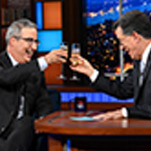40 National K-Cup Coffee Brands, Tasted and Ranked
Photos via Keurig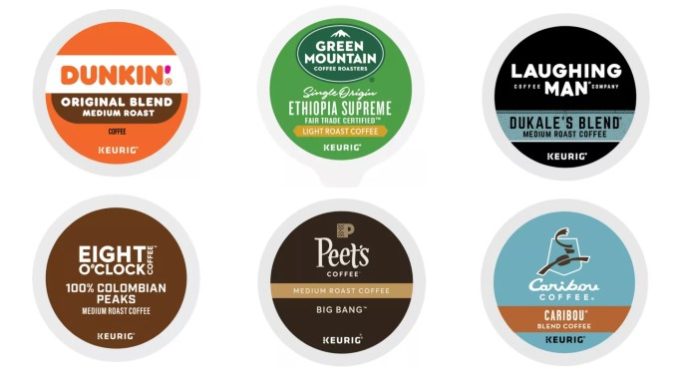
To a great many Americans, a cup or two of coffee is an ironclad morning ritual. And yet, “a cup of coffee” can imply so many different things. To some passionate coffee geeks, that “cup” doesn’t truly count unless it’s a delicately arranged, painstaking pour-over of their own, freshly ground and sourced, bespoke roasted, single-origin beans. And for countless other drinkers? They just need something hot and brown in their travel mug in the morning. A scoop from the canister of Folgers, into the Mr. Coffee drip machine, and they’re good to go. And both demographics think of that beverage as “a cup of coffee.”
Personally, I’ve always fallen somewhere in the middle, at least partially by design. I love coffee, and having the opportunity to try new and obscure coffees, and yet I’ve also resisted the urge to embrace the truly geeky side of the coffee spectrum. Why? Well, it’s mostly because I didn’t want to “ruin” cheap coffee for myself. Because after years of writing critically on craft beer and spirits for Paste Drink, and conducting numerous large-scale tastings of both, I decided that I preferred coffee to be more of a “sanctuary” beverage—something that (like wine) I could simply enjoy without diving too deeply into the finer aspects of flavor or snobbery. If I was going to explore the deepest parts of the deep end when it came to beer or whiskey, I still wanted to at least be able to pop a K-Cup into my Keurig and not be disappointed that it wasn’t a $8 pour-over at the cafe. It’s about enjoying the simple (and cheap) pleasures where you can reliably get them.
Recently, however, I began to mull over the fact that even when drinking from the seemingly humble K-Cup, coffee can be surprisingly diverse. More companies than ever are diversifying their lineups, and various single origin brands, offered in an array of different roasts, are increasingly the norm. Moreover, I realized I didn’t really even have a concrete reason for buying the handful of coffee pods I typically drank at home—they were just brands that I thought made an acceptable cup of coffee. But what if there were other, nationally available K-Cups that I would enjoy a whole lot more? What if I was missing out on far better brands sitting a foot higher on the grocery shelf? How would I know, unless I tasted them all?
And so, that’s what I decided to do. The following tasting and ranking is intended to answer a simple question: What are the best, widely available, unflavored brands of coffee sold in K-Cups? The goal here is to go wide—big, national brands that are easy for almost any consumer to find. The idea is that this is a lineup of K-Cups you can almost always find at grocery stores anywhere in the U.S., or at least via Keurig’s own store online. We haven’t included small-scale, indie roasters, who I’m sure are making phenomenal coffee—because the point is to determine when you walk into your local Kroger or Publix, what are the actual best buys available? And which brands should you probably avoid?
Again, I’m not claiming to be a true coffee expert here, or someone who has undergone training or gained certification to become the coffee world’s equivalent of a sommelier or cicerone. I’m just a veteran beer and spirits writer who really enjoys coffee, applying his (decent) palate toward his own morning cup of joe for the first time. Will I find a new favorite in the process?
Rules and Procedure
— Only commercial K-Cup coffee was tested. No self-filling K-Cup pods, no drip coffee machines, etc. Focus was on nationally available brands found at major retailers, with an overall attempt to make a representative sample of what one might find at the average grocery store. “Store brands” were generally not included, though I threw in one Walmart brand just to see what would happen. Only unflavored brands were allowed—you want hazelnut or French vanilla in your coffee, dump in the creamer of your choice. We’re taking it black for this experiment.
— For the sake of consistency, all K-Cups were made on the same machine, my own K-Supreme, the company’s most advanced current brewer with “Multistream Technology.” All coffees were also made to the same volume of liquid, and sampled hot. No iced coffee here.
— Coffees that performed well were re-tasted at the end of the initial process, in head-to-head tastings to determine a final ranking.
— Coffees were judged with no preconceived style guidelines, and were ultimately scored by how much I enjoyed them for any reason.
The Rankings
40. Tully’s Italian Roast
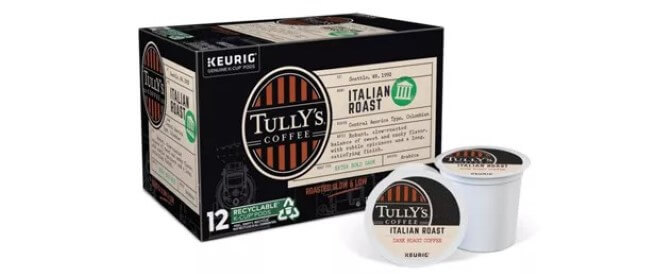
Not all of the dark roast K-Cup coffees in this tasting are objectionable—there are some I genuinely enjoyed quite a bit—but it’s fair to say that dark roasts have a tendency to go off the rails more easily, as epitomized by Tully’s Italian Roast. This one is indicative of all the aspects I don’t enjoy about certain dark roast coffees—one-dimensional focus on char and bitterness, with an astringency that quickly becomes overwhelming and unpalatable.
This one is intensely charred and smoky on the nose, with some earthiness as well. The smoke takes on an almost sour, tangy dimension that isn’t particularly pleasant. On the palate, it’s dry and bitter, with burnt toast and ashy roast turning to oversteeped tea and intense astringency that quickly dries out the palate. On every level, this is just pretty difficult to drink, which is why it’s the unlucky K-Cup on the bottom of the pile.
39. Folgers Classic Roast
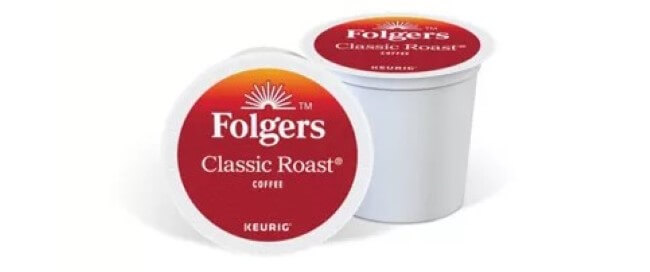
I was rather curious how the old-school, value pantry staples my parents drank through my entire childhood—your Folgers, your Maxwell House, etc.—might measure up in translating their 2 lb plastic tubs of ground coffee to the world of single serve K-Cups. The answer: Not particularly well, although a few put in showings that were respectable. Folgers Classic Roast, on the other hand, ranked as one of the most banal and purely uninspiring K-Cups I tasted during this ranking. The faintest suggestion of roast or smoke on the nose barely suggests “coffee” at all, while the palate is thin, bitter and watery. It’s also very dry, with no natural sweetness to speak of. There’s a whiff of burnt nuttiness, and then it just fades away with a papery aftertaste. The effect is like coffee from a pot that has been sitting on a heating ring, keeping it warm for hours. Suffice to say, not the kind of thing you’d want to drink.
38. Great Value Classic Roast
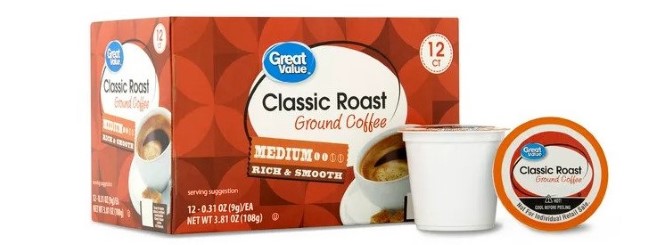
I primarily intended to stay away from “store brand” K-Cup coffees in this tasting, if only because there are few store chains that are truly national in scope—even the biggest grocery chains, for instance, are typically found only in one region. Walmart, though, is so omnipresent that it felt like a good exception … plus, I’m saddled with enough of a morbid curiosity that I really wanted to know how a flagship Walmart coffee might perform in this kind of tasting. Answer: It’s every bit as uninspired as you’d probably expect it to be.
On the nose, this one actually isn’t that bad—It’s solidly roasty, with a little trace of caramel or toffee, and slight campfire smoke. On the palate, however, Great Value Classic Roast immediately turns aggressively bitter and burnt, evoking charcoal and burnt toast. It’s also quite drying, and the unpleasant palate pretty much washes away whatever meager points it gets from the aroma. Ultimately, it tastes about as cheap as it looks.
37. Green Mountain Sumatra Reserve

Keurig’s own Green Mountain brand is among the most ubiquitous logos in the K-Cup world, and you’ll be seeing it a whole lot in this ranking. In terms of quality, though, it also varies wildly—some Green Mountain brands I quite enjoyed, and others (like the Sumatra Reserve) I found difficult to appreciate. This likewise goes to show that just because a coffee is “single origin,” featuring beans from only one region, that doesn’t necessarily make it a special, noteworthy or high-quality product. Some of Green Mountain’s single origin coffees are among their best products, while others are among their worst.
The Sumatra Reserve shows off earthy Indonesian coffee, but it’s so overtaken by the effects of its dark roasting that pretty much anything that would make it unique or distinct gets lost in the shuffle. The nose is rich but slightly generic, with very dark chocolate and solid char, with just a hint of smoke. On the palate, things turn dry and bitter, with lots of woody char. At first, this seems like not such an impediment, but this is one of those coffees that gets harder and harder to drink as it cools, and the drying, tannic-like sensation becomes completely dominant. With any single-origin coffee, you’re hoping for much more varietal character than this delivers.
36. Dunkin’ Espresso-Style Extra Dark Roast
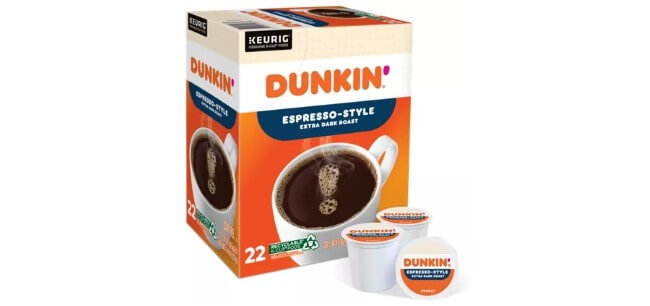
I ended up being pretty impressed by a number of Dunkin’ K-Cup brands, but I wasn’t terribly surprised to find their “espresso style” extra dark roast a little harder to swallow. This one definitely has plenty of intensity on its side—wood fire on the nose, with sweet smoke and a little resinous quality. On the palate it’s slightly syrupy in texture, with a mouth-coasting quality that unfortunately is primarily coating the palate with intense bitterness. That’s not necessarily a bad thing subjectively—there are probably people out there who would love this coffee, but even as an espresso fan, I don’t find it particularly appealing. To me, this one is just too unbalanced for a full cup of coffee. Perhaps it could be used in the context of an espresso drink, but on its own it’s crying out loudly for cream or sugar to lighten its intense presentation.
35. Green Mountain French Roast
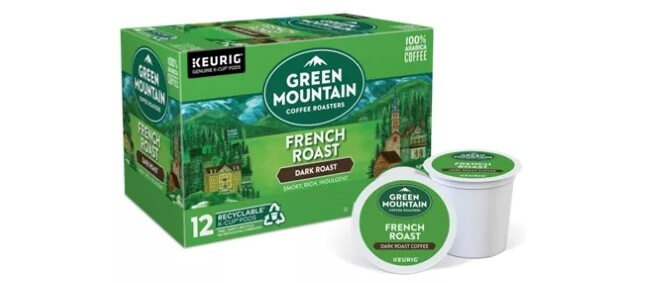
I promise, I don’t just hate all dark roast coffees in general—but with that said, a lot of the bottom third of this list has a tendency to be dark roasts. They’re at least improving somewhat at this point, in the sense that I’d rather have this Green Mountain French Roast than the particularly astringent Sumatra Reserve. Progress is being made.
This one features intense char and wood smoke on the nose, with burnt caramel. It’s quite earthy, evoking a woodpile in the backyard shed, as well as the fire you turn it into. Woody and resinous on the palate, and less toasty than I was expecting from the nose, but there are subtle traces of raspberry-like fruit as well. Fairly bitter overall, it has some astringency but isn’t super intense, closing with a resinous touch of pine needles. Overall, there’s just something slightly off putting about this K-Cup that I can’t quite put my finger on; its proportions feel somewhat out of whack.
34. Krispy Kreme Classic

Krispy Kreme obviously has quite a cult of personality for its donuts, but rarely do I hear of consumer loyalties being extended to its coffee. This K-Cup perhaps captures the reason why—it was among the more nondescript and bland entries in the tasting overall. Slightly smoky and nutty on the nose, but with a nuttiness that felt a little on the “singed” side all the same, it also carries through some slightly piney notes. On the palate, almost nothing carries through—it’s dry, bland and quite nondescript, with just a bit of pine needle and very weak roast. All in all, this smells okay, but it feels inherently watery and weak.
33. Maxwell House House Blend
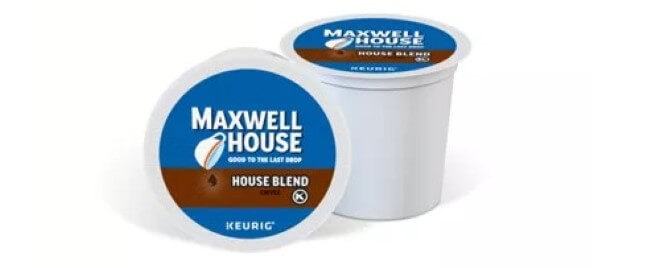
The copy editor in me is disgusted that the people at Maxwell House chose to use the term “house blend” after their company name, resulting in a “house house” when writing it out, but at least the coffee is significantly better than the flagship blend from their mass-market value competitors at Folgers, so that’s something. The nose here is a little nutty and a little peppery, but there’s also something slightly “dirty” to it, like a backyard after a summer rain storm. On the palate, I’m getting a touch of hazelnut, but also a tinge of something metallic. Overall, the nuttiness is pleasant, and there’s a pleasant sweetness, but the metallic note sours it a little bit. Still, far better than the Folgers Classic Roast, its direct analogue.
32. The Original Donut Shop Dark Roast Coffee
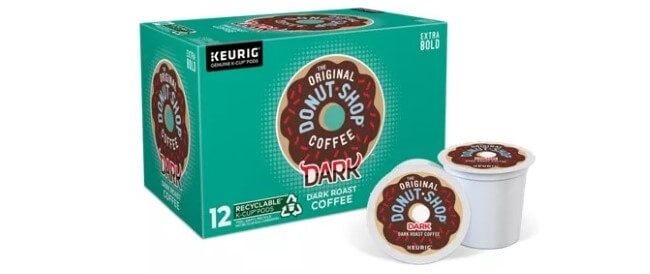
Sadly, the “dark roast” variants of many popular, well-known and well-loved K-Cup brands have a tendency to be lesser products. That is certainly true of The Original Donut Shop’s take on a darker roast, which presents on the nose with wood ash and brown sugar before transitioning to decent flavors of molasses and slightly vinous fruit jam. It’s fuller in texture than the original version of this popular K-Cup, almost a little syrupy, but like so many of the other poorly performing dark roasts it’s dragged down by a burnt finish, which contributes a lot of drying astringency. Not terrible, but the other Donut Shop option is at least somewhat more engaging.
31. Green Mountain Breakfast Blend
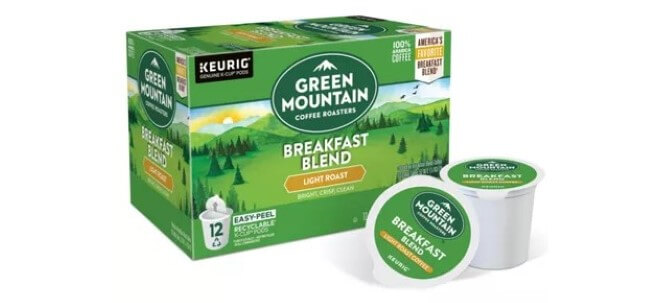
This stuff comes bundled with practically any Green Mountain variety pack or Keurig starter pack that exists, which is sort of a shame because it really doesn’t stand out in any way. It’s lightly nutty on the nose, displaying a mild roastiness and maybe the faintest trace of maple. Lightly nutty hazelnut is present on the palate, with an extremely mild char. There’s no bitterness to speak of, but well … there’s not really much to speak of in general. Decidedly bland, and seemingly watered down, this feels like it was designed for consumers who just want the most approachable, simple and vaguely coffee-like cup in the morning. It’s immediately forgotten.
30. Newman’s Own French Roast
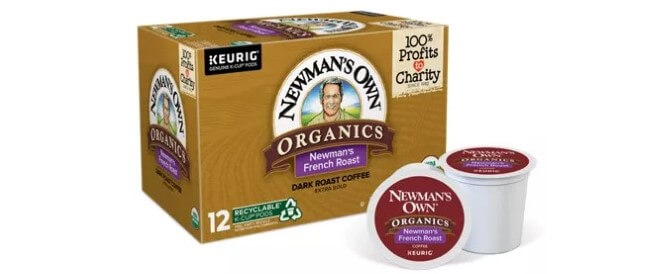
“French roast” was not a term that portended great success in this particular K-Cup tasting, but this one was at least marginally more pleasant than Green Mountain’s example. It starts out engagingly enough on the nose, with sweet smoke and wood char, along with the deeply crisped edges of chocolate chip cookies. The smoke then takes a more acrid and sour turn, however, suggesting cigarette tray. On the palate it’s sweet up front, into ashy roast and some astringency. There’s dark chocolate, and the suggestion of burnt brownies stuck to the pan, along with a not-so-pleasant mustiness. There are decent elements here, but you keep circling back to the word “burnt.”
29. Community Coffee American Classic
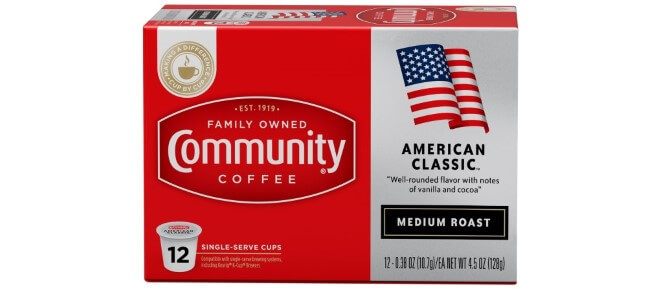
New Orleans’ Community Coffee is actually one of the oldest roasters in the U.S., known in particular for their various dark roasts, though American Classic is a bit on the lighter side. This one falls into the camp of fine, but not particularly memorable or engaging—it has a little molasses on the nose, along with an earthiness and something that almost reads as a bit malty. On the palate, American Classic is fairly dry and woody, with some toasted sugars. However, it reads as rather weak overall, lacking the assertiveness or signature flavors to really stand out. It’s easy drinking, but that’s mostly because it’s just bland. Still, that makes it far better than most of the coffees that finished in the bottom quarter of the list.
28. The Original Donut Shop Regular
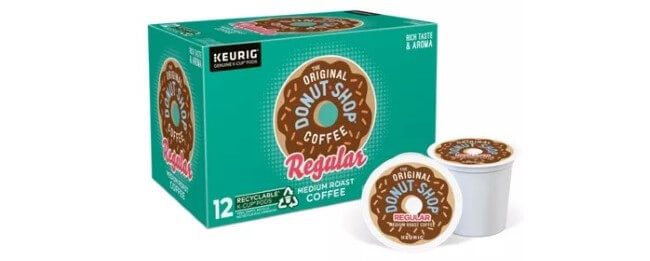
An omnipresent brand that seems like it’s been around since first home Keurigs rolled off the assembly line in the mid-2000s, The Original Donut Shop Regular is probably one of the first K-Cups that most coffee drinkers will ever encounter. It seems somehow fitting, then, that this K-Cup is like a platonic ideal of relative mediocrity—it’s not too bad, but it does absolutely nothing to stand out. On the nose, there’s some light cocoa powder, a little roasted nuts and a hint of buttered toast. The palate is likewise on the generic side, with slight caramel, mild charred woodiness and balanced bitterness. The only major detractors are a somewhat watery, thin texture and a finish that slowly and steadily veers into burnt territory. But all in all, it’s a very archetypal cup of nondescript coffee.
27. Newman’s Own Special Blend
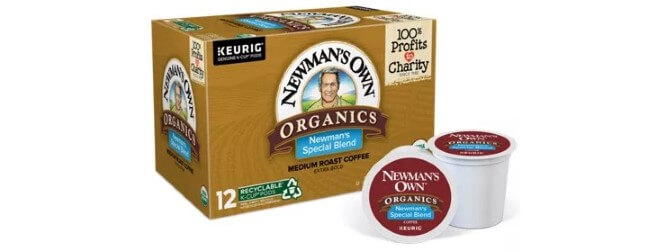
The flagship K-Cup of the Newman’s Own brand is more bold than some of the other pods that surround it on either side, which is both a selling point and a disadvantage simultaneously. The nose on this one is actually pretty nice—Solidly roasty, with traces of molasses cookie and a little baking spice. On the palate, though, it turns more aggressively roasty and burnt, with notes of charred cinnamon stick and deeply caramelized sugars that are also verging on burnt. It’s a little vinous, and a bit drying, turning bitter quickly. It feels like if it just pulled back a little bit on the aggressively charred flavors, it could be quite pleasant, but it can’t quite resist going a bit too hard.
26. Starbucks Veranda Blend
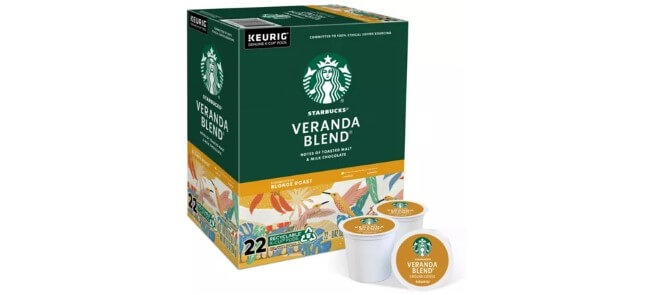
Starbucks is obviously known for dark roasts in general, having played a large role in normalizing the dark roasting of many styles of beans. In recent years, however, they’re increasingly moved to diversify their coffee lineup to appeal to other tastes, with lighter (by their standards) “blonde” roasts such as Veranda Blend. This flagship light roast is certainly more distinctive on the nose than some of the other coffees in this part of the ranking, with impressions of pastry and bread crust, along with faint woodiness. The nose is pretty muted overall, however, and that follows through on the palate with notes that feature alternatingly light bread crust and vinous tones, paired with notably higher acidity. It’s mild and approachable, what the company advertises as “mellow,” but it’s also slightly boring. Still, if you want to avoid the more oppressive sense of roastiness, or prefer a brighter and more acidic coffee, it’s an obvious option to check out.
25. Green Mountain Colombia Select
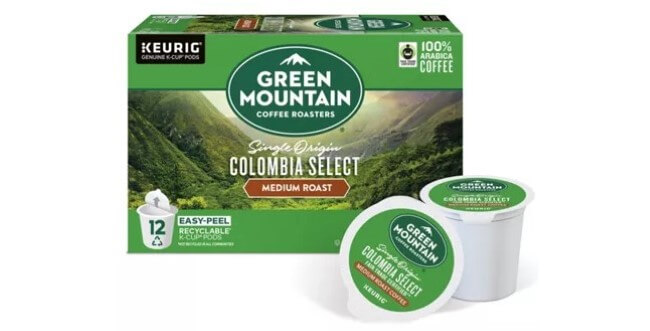
Green Mountain’s single origin coffee from Colombia feels like a good overall baseline for for this tasting—from about this point on, the K-Cups increasingly fall into “I wouldn’t mind drinking this” territory, though Colombia Select doesn’t really capture the imagination in any dramatic way. It’s merely mild and approachable, without major flaws or downsides—the nose features lots of caramel, along with roasted nuts and distinctly milk chocolate. On the palate, this one is mild, with a little caramel and hazelnut, and flavors that don’t make a lasting impact. Each sip lingers for only a moment or two before fading away, and it feels like you could drink a whole pot of this without forming any strong opinions about it. Solid, but forgettable.
24. McCafe Breakfast Blend
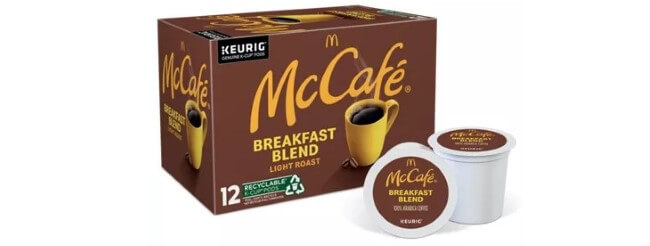
I was dimly aware that there are people out there who are devotees of McDonald’s breakfast and their coffee, but suffice to say my expectations were pretty damn low. I was pleasantly surprised to find, then, that both of the McCafe coffees in this tasting were actually fairly decent—not the most characterful or exciting, but far better than they’d probably have to be in order to sell them next to an Egg McMuffin. The McCafe Breakfast Blend is light and sweet as you’d probably expect it to be, with a sweet caramel nose with faint hints of char. Those notes carry through on the palate, with bittersweet caramel and just a touch of floral vanilla. Very neutral overall, and not assertively flavored, this is just pleasant and uncomplicated. And there are definitely worse things to be than that.
23. Caribou Coffee Daybreak Blend
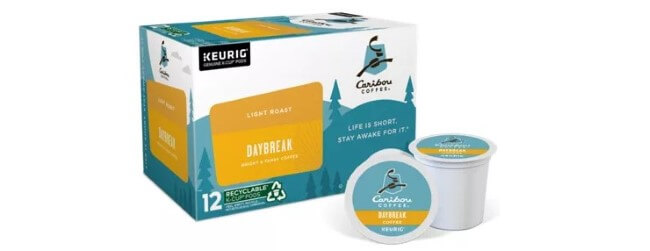
Caribou Coffee performed well in general in this tasting, though the Daybreak Blend is one that I ultimately had a hard time ranking—each time I revisited this K-Cup, it was difficult to settle on a final opinion. It’s more complex than most of the coffees surrounding it, though I don’t know if its disparate flavors are always working in perfect harmony with each other. On the nose, I’m getting citrus, along with floral notes and almond. The citrus follows through in a mild way on the palate, with delicate florals and slight caramel. It’s a bit more dry here than expected, lacking a little heft and roastiness—it is a light roast, after all. There’s a slightly herbal quality suggesting green tea, with a twist of lemon, and the acidity is a bit on the high side. It also dries out the palate somewhat. All in all, Daybreak Blend is a mixed bag—I like its more complex flavors, but it also feels a little bit muddled at times.
22. Folgers Black Silk
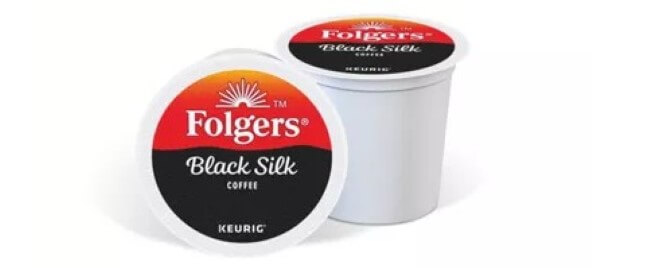
Woah now, what’s this? A Folgers K-Cup nearly making it into the top half of the ranking? After the Folgers Classic Roast was one of the very worst pods I tasted in this thing? Well, I’m as surprised as anyone, particularly by the fact that this is a flagship Folgers dark roast. But man, this is far better than the Classic Roast was, with a nose that suggests brown sugar, molasses cookie, sweet smoke and dark chocolate. On the palate, this is quite sweet, which helps balance the roasty astringency. Bizarrely, it reads as less burnt than the regular Folgers Classic Roast was, despite this being the dark roast. Its flavors suggest dark chocolate and slightly burnt brownie edges. All in all, a not-half-bad dark roast from Folgers of all companies. Like I said, I’m shocked too.
21. Community Coffee Signature Blend

One of Community Coffee’s oldest brands, Signature Blend is the company’s original dark roast, and it’s measurably more engaging than the rather tepid American Classic was. This one is notably darker and more assertive on the nose, with pretty significant char and spicy black pepper earthiness. On the palate, it’s a little woody and every so slightly smoky, with dark chocolate and slightly resinous tones … almost minty? There’s some very deeply caramelized sugar as well, and the Signature Blend avoids becoming too bitter or drying. All in all, a middle of the road, approachable dark roast with a little nuance.
20. Starbucks Sumatra
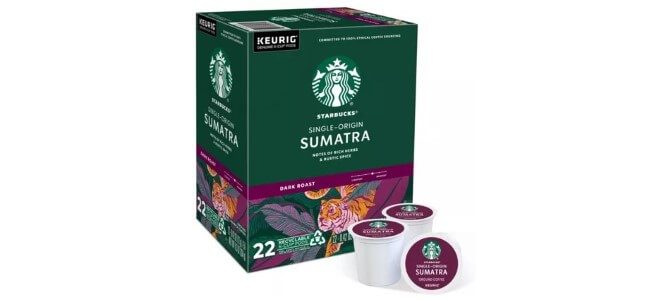
At some point, I’d be curious to taste some Indonesian coffee that doesn’t receive the intensely dark-roasted treatment, as it often seems more or less impossible to separate commercial brands from this expectation. This single origin K-Cup from Starbucks is one I feared might venture into the unpalatably burnt territory, but it holds up from committing too fully in that direction. The nose is quite rich, with a deep char, dark chocolate and burnt marshmallow, with hints of cardamom-like spice. Viscous and bittersweet on the palate, it combines intense roast with burnt woodiness, slightly drying and fairly syrupy in texture. There’s more of the spice note, and a little molasses, along with significant astringency that stops short of being overwhelming. Overall, I like the profile here, though this seems like a coffee that would be better in small quantities.
19. McCafe Premium Roast
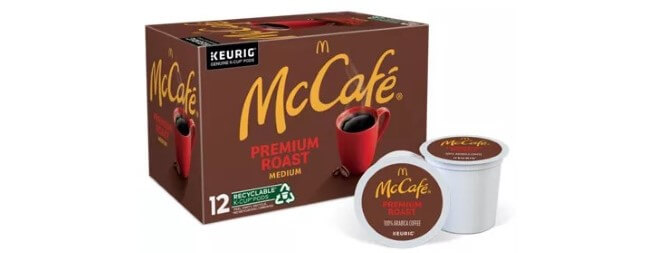
Another McDonald’s coffee, this time cracking the top 20—not bad for a brand I would have given very little respect to before starting this tasting. The flagship Premium Roast from McCafe can boast a nutty, milk chocolate-like nose, with a little bit of caramel. On the palate this is bittersweet and even slightly floral, quite mild in terms of roast. There’s perhaps something slightly dusty or stale about it, but the milk chocolate keeps coming through and is a nice signature flavor note. Overall, this is a pretty balanced, lighter cup of coffee without any obvious flaws. Not exactly thrilling, but solid.
18. Peet’s House Blend
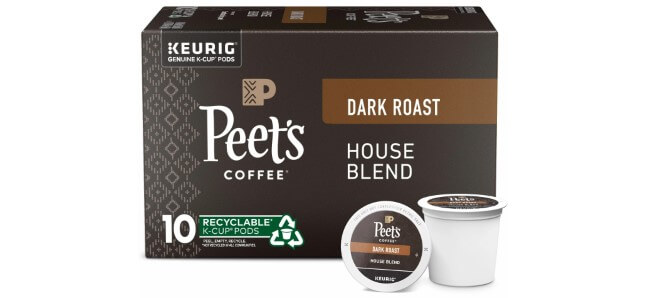
In terms of “batting average,” Peet’s might have been the most impressive company whose K-Cups were well represented in this tasting—I sampled four different ones, and all four of them ended up in the top 20, demonstrating an impressive baseline of quality. With that said, the Peet’s House Blend was the least overall memorable of those coffees—a pretty standard dark roast featuring sweet smoke and char on the nose, along with brown sugar, a touch of hazelnut and cinnamon. Not particularly flashy, this one has a smooth and slightly nondescript palate with hints of toffee, a gentle roasty astringency and a slightly dry finish with a touch of milk chocolate. It has some aspects in common with another popular Peet’s dark roast, Major Dickason’s Blend, but I ultimately preferred the latter.
17. Eight O’Clock The Original
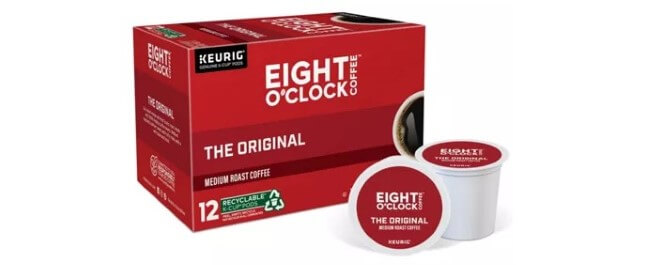
A good value option on many supermarket store shelves, Eight O’Clock is one of those brands I’ve occasionally purchased in the past without really giving it a proper critique. The company’s flagship “The Original” is a bit more characterful than the somewhat generic name might imply: The gentle nose has a good amount of brown sugar and something like baked pastry. On the palate, I’m getting milk chocolate, brown sugar and a little bit of sweet char, like a bourbon that is mostly getting sweet oak char from its barrel. There’s no real bitterness to speak of. This is a simple, uncomplicated coffee on the sweeter side, but it’s pretty pleasant.
16. Green Mountain Costa Rica Paraiso

Another single origin coffee from Green Mountain, Costa Rica Paraiso is one of their more unique K-Cups. It’s not particularly assertive in its approach, but it is more complex than the majority of their brands. On the nose I’m getting dark chocolate, but also vinous and more fruity notes—sweet orange, and maybe a little coconut. It’s somewhat more dry on the palate, and a little bit floral and nutty all at once, with a mild bitterness. Overall, it’s fairly light bodied and mild, but the flavor notes are pretty unique—it’s a bit hard to come to a conclusion on this one, because the nose and the palate seem almost separate from each other. All in all, though, its individuality does make it stand out.
15. Peet’s Major Dickason’s Blend
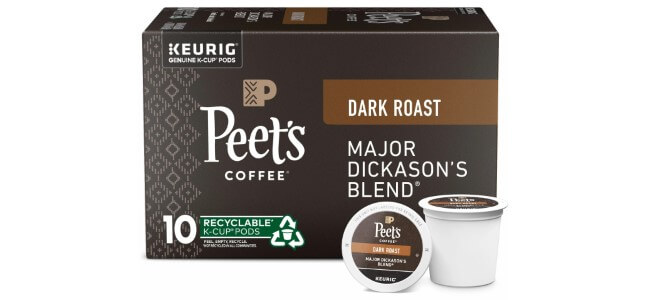
This classic Peet’s blend is another dark roast, though my experience here is that the dark roasts from Peet’s are generally more gentle than some of the other ones on the market. This one is roast and sweet on the nose, and a bit earthy as well, with the suggestion of anise/licorice. On the palate, it’s pretty gentle—a clean roastiness suggests dark chocolate, with ample sweetness. I’m reminded almost of the way coffee ice cream delivers a familiar coffee flavor, which is only amplified by the slightly creamy texture of Major Dickason’s. As it cools, this one increasingly seems quite sweet, with a rich cinnamon brown sugar note. Familiar, comforting and quite easy to drink for a darker roast.
14. Dunkin’ Midnight
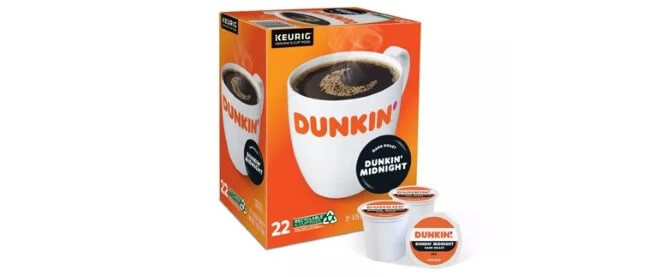
Dunkin’s go-to dark roast is Dunkin’ Midnight, and in K-Cup form I liked it quite a lot more than the “Espresso-Style Dark Roast,” which was too intensely bitter and astringent to tolerate. This one is also on the bitter side, but it has a lot more going on as well. Quite smoky and earthy on the nose, there’s no mistaking that this is a very dark roast. It’s quite woody and outdoorsy in terms of aroma, suggesting woodpile and campfire, along with desiccated coconut. On the palate this is a punchy brew, with very dark, bitter chocolate and some coconut, along with wood smoke, earthiness and mild astringency. This one was right on the edge of “too bitter” for me, but I ultimately liked its more bold, challenging profile. Also: This doesn’t factor into the final ranking, but this one tasted great as the accompaniment to a slice of coffee cake, which offered the sweet to balance the bitter. You might want to treat it as an analogue to espresso.
13. Green Mountain Nantucket Blend
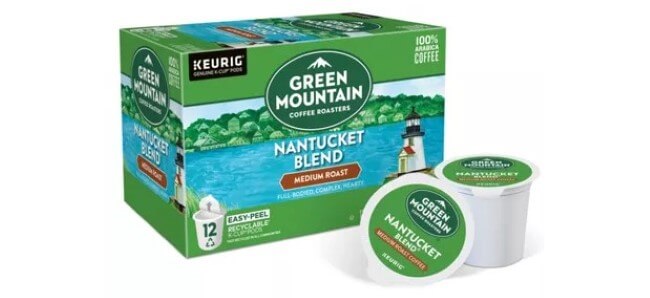
This is the K-Cup that ultimately led me to conduct this ranking. Nantucket Blend had been one of my go-to supermarket staples for several years, and I’d always enjoyed it. One day, though, looking up at the wall of competitors, I wondered if there were numerous superior options within an arm’s reach. At the end of the day, that proved to be the case—there were plenty of K-Cups I liked more than the common Nantucket Blend, but at the same time this classic Green Mountain pod also acquitted itself pretty well. There’s a reason it tends to be included in pretty much any Green Mountain variety pack.
On the nose, Nantucket Blend evokes dark chocolate, mild wood char, a little bit of caramel and hints of smoke, along with a slight peppery spice. On the palate, it features a balanced roastiness, gentle and accessible, with a light char and gentle sweetness. As it cools, one can more easily get a sense of chewy brownie edges, and some milk chocolate as well, ever-so-slightly bittersweet. It’s really not the most distinctive of these K-Cups, but it’s very balanced and easy to enjoy. I probably won’t be buying it as often as I used to, but I’ll still be happy to drink it.
12. Starbucks Pike Place Roast

The original Starbucks blend is still arguably their best, at least among the K-Cups I was able to try. The company categorizes this as one of their “medium” roasts, although that feels like a gambit to entice more moderate drinkers, because in terms of flavor it’s really quite dark. Lots of charred wood on the nose meets a hint of anise-like spice and wisps of smoke. The palate responds with big dark chocolate and graham cracker, along with cinnamon. It leaves a flavor in your mouth like you had a bite of coffee cake a minute or two earlier. Yes, as the detractors will likely insist, it does register as slightly “burnt,” but it’s a mostly bittersweet sensation that I ultimately enjoy. It’s not a style of coffee I would probably want to drink every day, but it’s something I’d definitely be in the mood for, from time to time.
11. Tully’s Hawaiian Blend
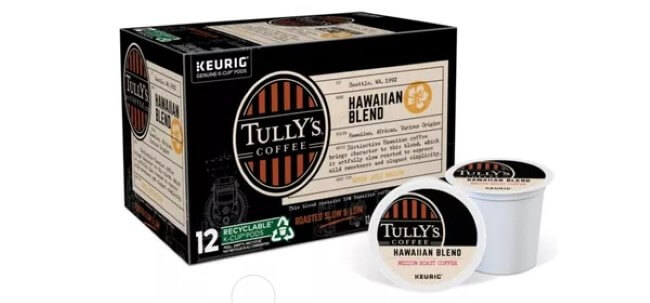
This is an interesting one. I’m not particularly familiar with Hawaiian coffee, so I can’t necessarily comment on how “to style” this particular K-Cup might be, but it certainly stands out in a few distinct ways. On the nose, this one strikes me as floral, with light citrus, mineral notes and almost a slight “meatiness,” a savory quality that is hard to place. On the palate, it’s fairly dry—a natural dryness, rather than the palate being “dried out” specifically. There are floral and mineral notes, and possibly a slightly metallic tone. The roasted tones are very crisp and clean, reminiscent of the character roasted barley might impart in a stout beer. Slightly bitter, this seems appropriate to drinkers who perhaps might prefer a less sweet, more “adult” coffee profile. Intriguingly different.
10. Green Mountain Dark Magic
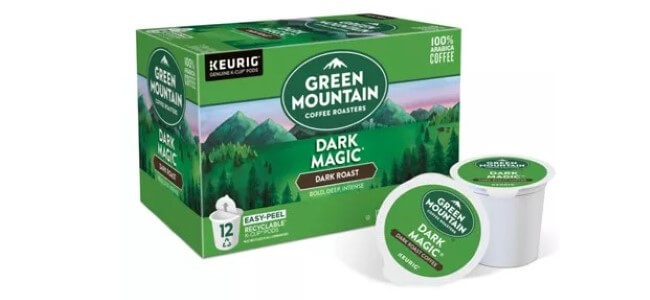
Green Mountain has several different flagship dark roasts, but this was pretty easily the best of them. Brown sugar and sweet wood smoke stand out on the nose, along with brownie and a hint of less expected honeycomb. It’s pleasantly rich, with the sweet smoke being a highlight. On the palate, Dark Magic presents big dark fruitiness, raspberry and blackberry jam, combined with dark chocolate and ashy roast, though I’m also getting some buttered toast. There’s a good amount of sweetness, and a modest corresponding astringency, which isn’t too overbearing. All in all, one of the better and more balanced overall dark roasts in this tasting.
9. Laughing Man Colombia Huila

Another roaster with an exceptionally high batting average, New York’s Laughing Man has two coffees in this tasting, and both managed to place in the top 10. This is a dark roast take on Colombian coffee, which one typically sees presented in light-to-medium roasts, but I can’t fault their results. This K-Cup presents with a big, bold roastiness on the nose, bringing out sweet smoke and something more umami, with a hint of soy. Exploring the nose further, I’m getting graham crackers and the suggestion of s’mores, and even a little herbal bay leaf—lots going on here. On the palate, bitter cocoa and char duke it out, and there’s more graham cracker—it’s like if you rebaked the crackers yourself and let them get really dark. The chocolate is very, very dark, like a 90% cacao bar, which pairs well with hints of vinous dark fruit. A very nice dark roast.
8. Peet’s Cafe Domingo
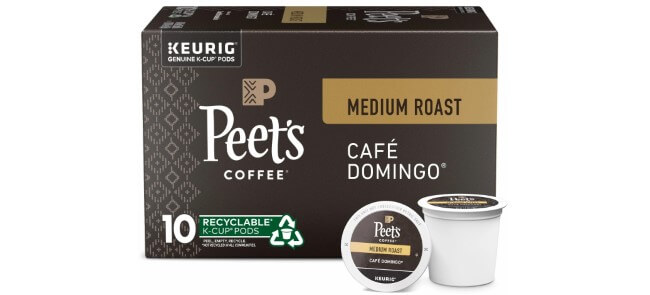
This would appear to be Peet’s take on the nutty Central American coffees that so many Americans enjoy, and it’s a top-tier example. Rich and sweet on the nose, with lots of caramel, brown sugar and a definite air of pecan praline, it’s very inviting. That praline carries over to the palate, with toffee or salted caramel flavors, and sweet, crisp roastiness. A tad on the desserty side—although keep in mind that is relative, because none of these coffees are even close to the sweetness of flavored ones—it’s redolent in brown butter sugar cookie tones, and just a wisp of smoke, finishing semi-dry. Silky smooth and extremely approachable, this is a people pleaser for certain.
7. Green Mountain Vermont Country Blend
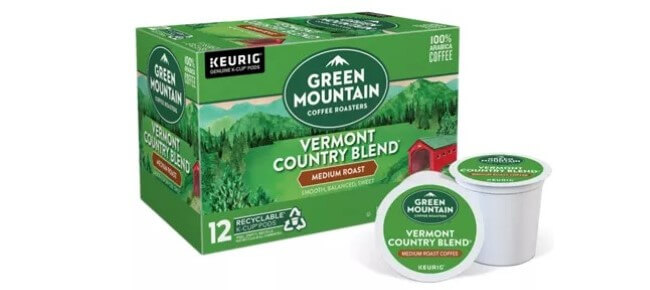
I’m not exactly sure what the name “Vermont Country Blend” is meant to evoke in the consumer—do people drink their coffee differently in the Vermont rurals than in the cities?—but regardless, this is one of Green Mountain’s best and most accessible blends. I’m getting dark chocolate on the nose, with hints of caramel, a bit of toastiness, and cinnamon sugar. Things turn toward the sweet on the palate, with brown sugar, caramel and milk chocolate, turning in a more pastry/malty direction hinting at pain au chocolat. This one seems particularly sweet as it begins to cool, expressive in the brown sugar and cinnamon. Compared with the Nantucket Blend, it’s more assertively flavored and definitely sweeter, with a bit less roasty edge. It might be a bit on the sweet side for more “serious” coffee drinkers, but it’s a very satisfying cup.
6. Eight O’Clock 100% Colombian Peaks
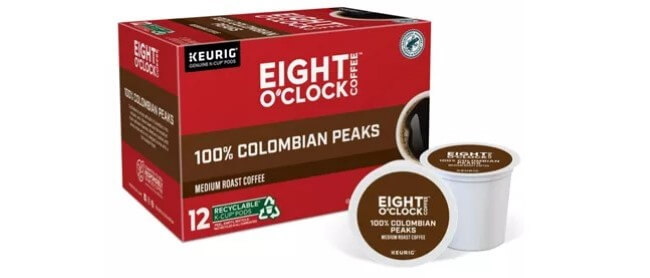
This is a coffee I’d sampled before on several occasions, while failing to really appreciate what it does so well. One of the best of its type in the tasting, Colombian Peaks makes a somewhat more subtle approach. On the nose, this is quite nutty, with milk chocolate, hazelnut and freshly roasted peanuts. On the palate, the same notes of hazelnut milk chocolate are present, but it’s also a little floral and mineral, with something slightly pine-like as well. Crisp roastiness and modest acidity, along with a lingering roast without much in the way of astringency make for a lighter but engaging coffee. It’s a very nice change of pace to pair with some of the heavier, sweeter ones in this tier of the tasting.
5. Dunkin’ Original
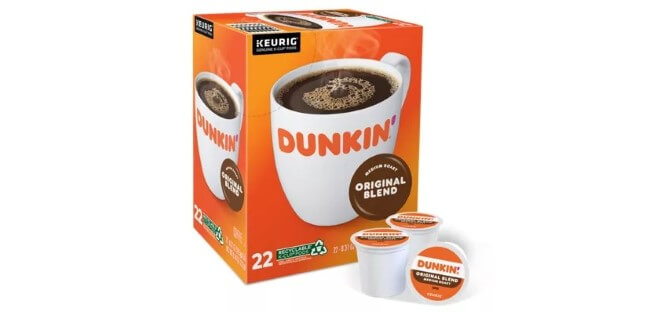
There are a whole lot of Dunkin’ coffee devotees out there—I have met these folks, and a lot of them are very committed to Dunkin’s brews. After tasting their flagship roast, I can now see why that would be—even coming from a K-Cup, Dunkin’ Original stands out for how assertive and concentrated it tastes. All around, this is one of the stronger and bolder presentations, with a nose that suggests both significant nuttiness and also vinous dark fruit, sweet smoke and brown sugar. It smells like something you’d add to BBQ sauce, or red-eye gravy. On the palate, it feels notably concentrated, with a slightly syrupy mouthfeel that isn’t present in many of these other pods. Vinous dark fruitiness is paired with molasses flavors and solid roast, with a bittersweet, slightly dry finish. This K-Cup is more like the kind of extraction you’d get from drip coffee at your local indie roastery, so if you prefer your coffee strong, Dunkin’ is a brand you should be checking out. It’s surprising that something with this bold of a profile comes from a national donut chain.
4. Caribou Blend
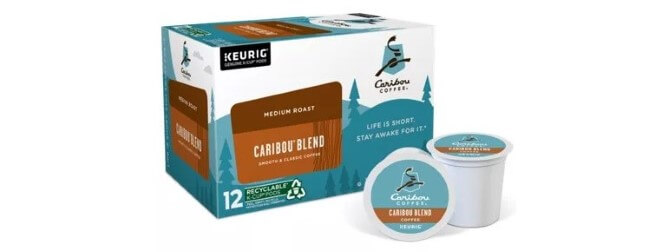
If there’s one thing that this tasting demonstrated, it’s that the big flagship brands of many roasters are their enduring flagships for a reason—the seasonal and specialty releases and such may create excitement among the clients, but it’s brands like Caribou Blend that pay the bills. This is a lovely, balanced K-Cup, with a nose of roasted nuts and sweet smoke, combined with cinnamon sugar for a festive vibe. On the palate, this is mildly sweet, with a little brown sugar and muted roastiness, met by a little dark fruit suggesting cherry or plum. It’s not a bombastic coffee; it’s a very balanced one with very little bitterness, like a more delicate version of the Green Mountain Vermont Country Blend. It’s like the platonic ideal or best version of what someone who grew up drinking drip coffee from a big jug of Folgers would probably appreciate as an adult with a more refined palate. Very much the center of the bullseye, in terms of “I think almost anyone would like this.”
3. Laughing Man Dukale’s Blend
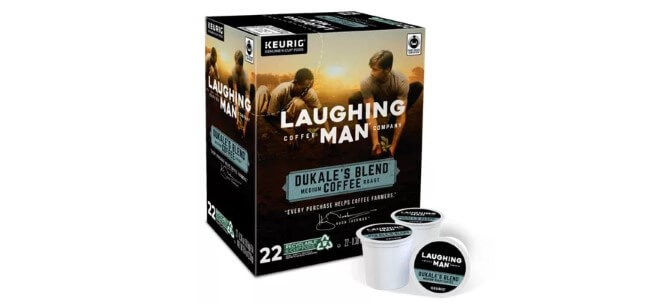
Laughing Man blends were quite impressive in this tasting, and this one named for an African coffee farmer who inspired the brand is among the best. The nose is wonderfully rich and nuanced, with lots of chocolate, along with stone fruit and some floral notes. It smells like pain au chocolat with jam—maybe a bit of strawberry, or plum. On the palate, this is also very nice but not overwhelmingly assertive—a lighter presentation that is floral and lightly roasty, with hints of berry fruitiness and a faint aftertaste of dark chocolate. It’s like the aftertaste of a 70% cacao bar, but overall the effect is more gentle than it is punchy. The complexity of flavors is what makes it so impressive, as there’s more going on here than in almost all the other K-Cups of the tasting.
2. Green Mountain Ethiopia Supreme
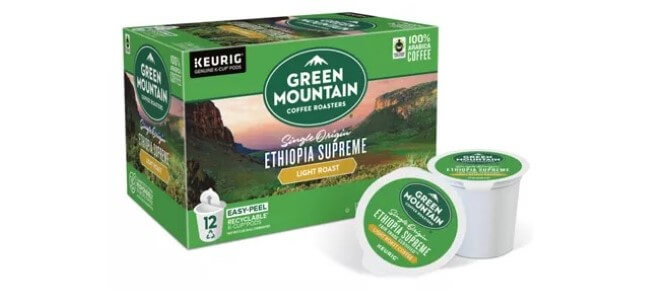
Easily my favorite overall of the single-origin coffees from Green Mountain, and a strong indication that my palate runs in the direction of African coffees, Ethiopia Supreme makes a case for why lighter roasts are so popular among coffee geeks these days. It’s strikingly different from so many of the coffees that you’re likely to encounter on the K-Cup shelves—quite floral on the nose, with bright citrus, milk chocolate and snappy roastiness, along with mineral tones, it has a very upbeat and ebullient sort of feel to it. On the palate, this one conveys lightly roasted nuts, some juicy citrus, mild cocoa and plenty of floral tones, making its varietal character much easier for even a novice coffee taster to pick out. The effect is quite sunny and cheerful, and although it’s not as bold or assertive overall as some of the other roasts, I love the freshness of this profile. It’s one of the few coffees on this list where I would use the word “refreshing.”
1. Peet’s Big Bang
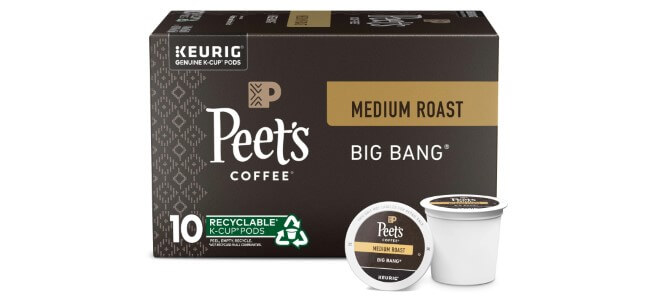
It’s coffees like this one that make me glad I took the time to conduct an extended tasting of 40 K-Cup brands, because Peet’s Big Bang is a gem, one I might never have gotten around to sampling otherwise. There’s a nice nose of caramel up front on the nose, and hints of roasted nuts, along with some delicate florals, but the thing that really makes this K-Cup stand out is its exotic fruitiness—lots of citrus and especially stone fruit (juicy peach/passionfruit) make it stand out in a major way. On the palate, that fruitiness carries through, marrying pastry and peach cobbler with crisp roastiness, with mild corresponding bitterness. Big Bang brings unique flavor notes to the table, but delivers them in a very approachable way—it’s both an easy drinking cup, and one with nuance to spare. Delicious, and deserving of the #1 spot in this ranking.
Jim Vorel is a Paste staff writer and resident craft beer and liquor geek. You can follow him on Twitter for more drink writing.






































